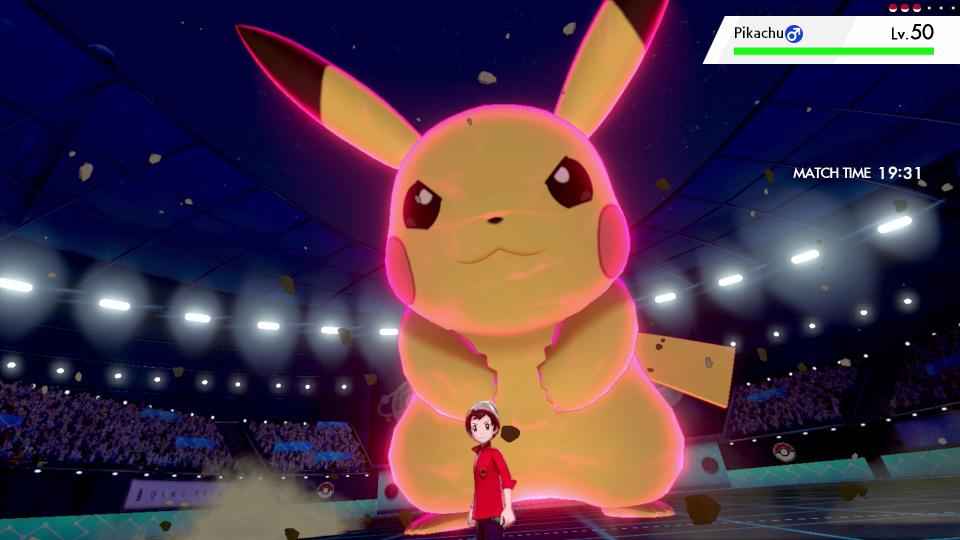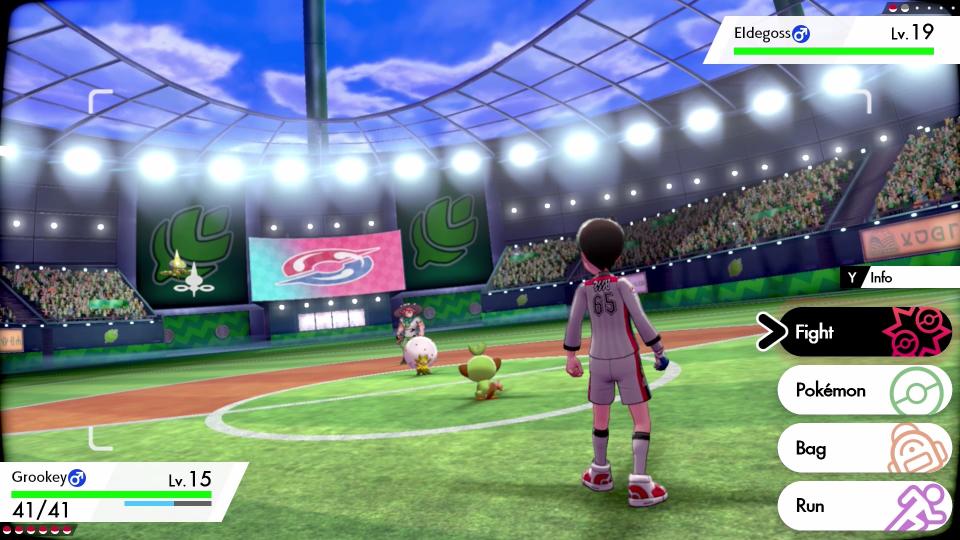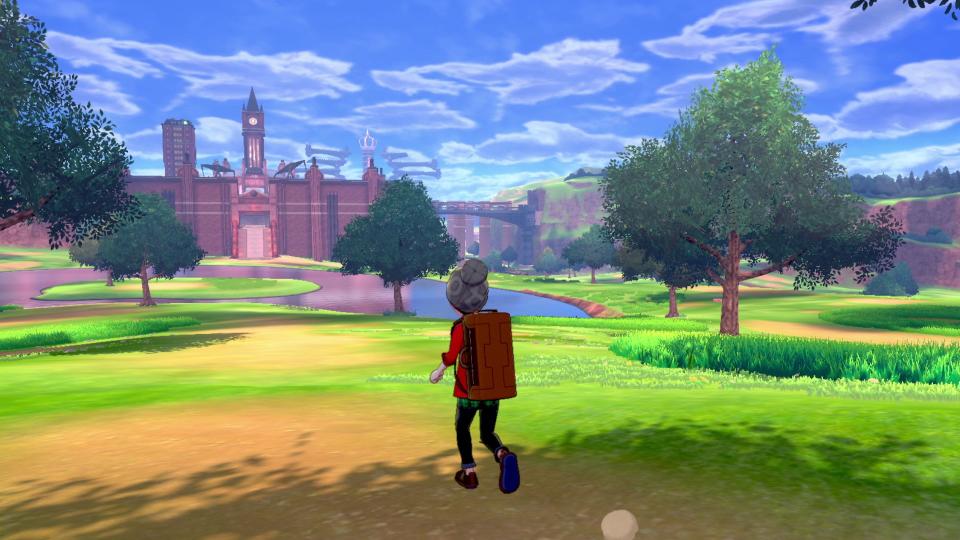'Pokemon Sword' and 'Pokemon Shield' review: The 'Pokemon' game I've always wanted
One of the most popular video game franchises is finally coming to your home TV. "Pokemon Sword" and "Pokemon Shield" are the first main "Pokemon" games to land on one of Nintendo's (NTDOY) home consoles, bringing to life the dreams of millions of ‘90s kids who just wanted to battle with Pikachu on their parents’ big screen, rather than on their Gameboy.
Available Nov. 15 for the Nintendo Switch, "Pokemon Sword" and "Pokemon Shield" bring a host of major changes to the 23-year-old franchise outside of the new ability to play games on-the-go.
There are new effects like Dynamax, huge open-world style areas for you to explore and search for pokemon, and, of course, a slew of never-before-seen pocket monsters for you to catch and collect.
It's a "Pokemon" fan's dream come true … for the most part.
"Pokemon" comes home
The "Pokemon" franchise has always been exclusive to Nintendo's handheld consoles, including Gameboy, the DS, the 3DS, or the 2DS. There were a number of secondary "Pokemon" titles released for consoles, notably "Pokemon Stadium" and "Pokemon Snap," and adapters that let you play your Gameboy games through your Nintendo 64. But nothing was ever made specifically for Nintendo's home consoles.

That's part of what makes "Pokemon Sword" and "Pokemon Shield" so special. Finally, there are two full-fledged "Pokemon" titles you can play on your TV. Since it's the Switch, though, you can still take your "Pokemon" with you wherever you want.
Because "Sword" and "Shield" get some extra horsepower from the Switch compared to the 3DS or 2DS, developer Game Freak was able to craft a more fully realized world for you to explore. Streams flow and reflect light, buildings and cities look more alive, and gems inside of caverns twinkle like strings of Christmas lights.
Draw distance, how far you can see in the game, is especially impressive. Though, surprisingly, pokemon in cities and on roads still pop up as if out of nowhere when you get close enough.
I also noticed slowdown during certain portions of pokemon battles, which I had hoped was something that would disappear after I made the jump to the Switch. It's also odd to see trainers disappear, then reappear behind pokemon during fights.

To be sure, the worlds of "Sword" and "Shield" have big new improvements — but there are still jarring performance issues. These glitches don't take away from the fun of the games, but they do stand out considering this is a game running on a console that can handle titles like "Doom" and "The Witcher 3."
Jolly ole' Galar
"Sword" and "Shield" take place in the fictional "Galar region," a massive island designed to evoke the look and feel of turn-of-the-century England. Of course this wouldn't be a "Pokemon" game if there weren’t some super-advanced technologies and buildings.
Music throughout "Sword" and "Shield" is top-notch. As you move through different regions, you'll hear new songs, such as bagpipe-style music played as you move further north in Galar, the game's Scotland analogue.

Traveling through Galar's cities and towns feels very much like playing previous "Pokemon" games. Of course, they feel far larger and look much more complete. The games, however, truly open up when you move into the Galar region's wild areas.
These areas are massive open-world sections that allow you to freely explore and capture pokemon at will. These areas offer a huge variety of pokemon packed into banks of grass, lakes, near rundown buildings, and more. There's something freeing about being able to find pokemon in such open areas without being bound by tight walking paths. It's a much needed improvement to the franchise, and gives a good idea of where its future is headed.
Pokemon go big
At the heart of "Pokemon Sword" and "Pokemon Shield" are, obviously, pokemon battles. If you've been playing "Pokemon" games for the past few generations, you'll recognize the various attack animations for moves like "bite," "tackle," etc. The biggest change comes in the form of a new battle style called Dynamaxing.
Dynamaxing allows you to super-size your pokemon to the size of buildings and perform moves that generate massive explosions, grow mushrooms the size of trees, and flood the battle arena with water.
You'll largely Dynamax your pokemon during gym battles and when coming upon pokemon dens in the Galar region's wild areas. It adds a new, interesting dimension to battles, similar to mega-evolutions in prior titles. Dynamaxing, however, only lasts three turns, and then your pokemon returns to its normal size — so you'll need to use the move strategically.

Fighting it out against pokemon gym leaders in "Sword" and "Shield," meanwhile, is a far more exciting experience than in previous games. Rather than small dojo-style gyms, you'll battle in soccer stadium-sized buildings complete with puzzles.
Enormous crowds pack each of the pokemon gyms, cheering and chanting as your battles drag on. And while it seems like a small touch, it truly makes each gym fight feel like a real sporting event, which goes a long way in helping to build out the world of the Galar region.
Should you get it?
I've wanted to be able to play a full-fledged "Pokemon" title on my television since I was in middle school, and "Sword" and "Shield" have finally delivered on that. Being able to play wherever I want with the Switch makes it all the better.
There are some graphics issues that I wish Game Freak worked out, but there are so many improvements and additions to "Sword" and "Shield" that anyone who considers themselves a "Pokemon" fan now or did in the past should dive in and start catching them all.
More from Dan:
Got a tip? Email Daniel Howley at [email protected], and follow him on Twitter at @DanielHowley.
Follow Yahoo Finance on Twitter, Facebook, Instagram, Flipboard, SmartNews, LinkedIn,YouTube, and reddit.
